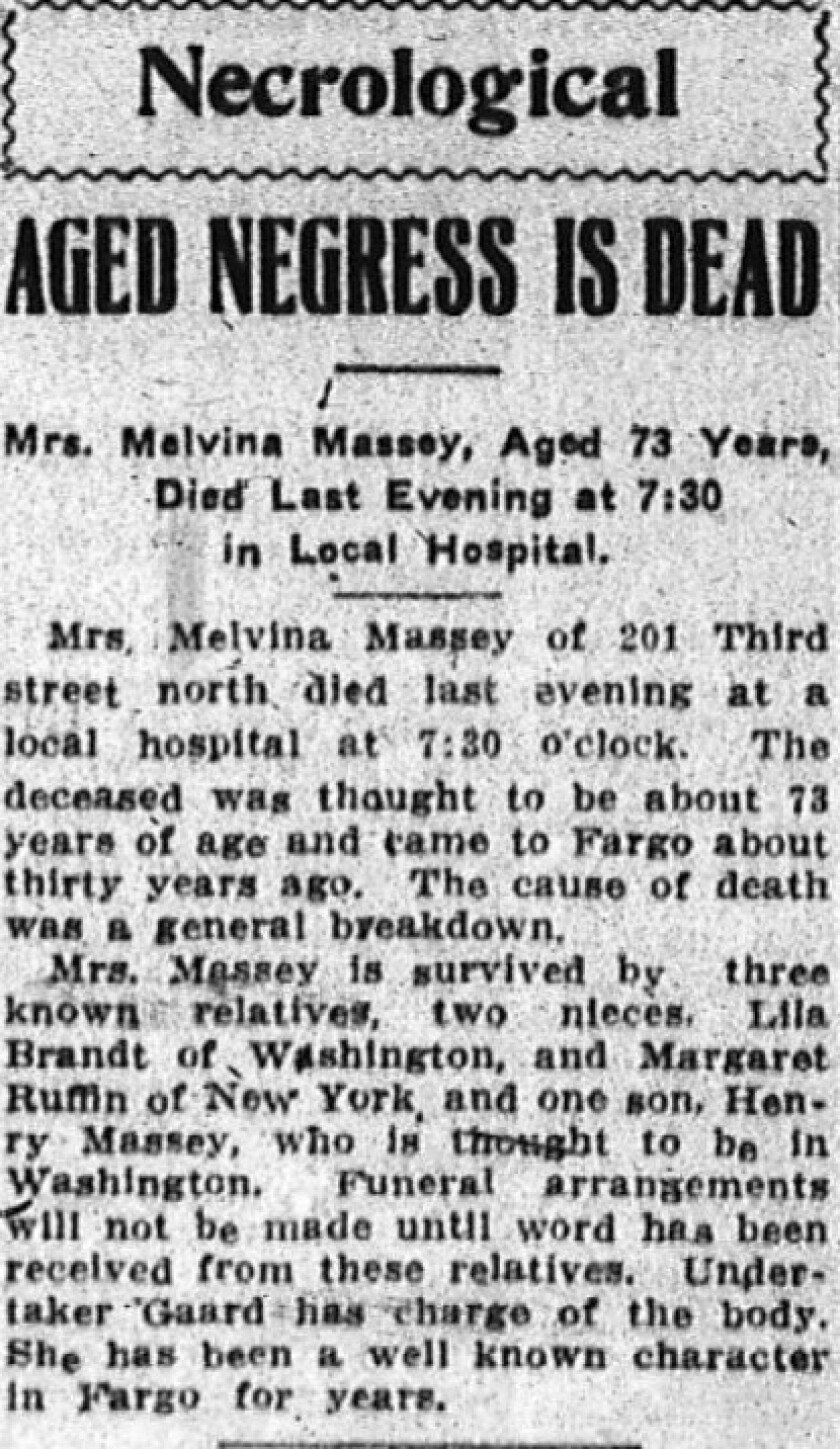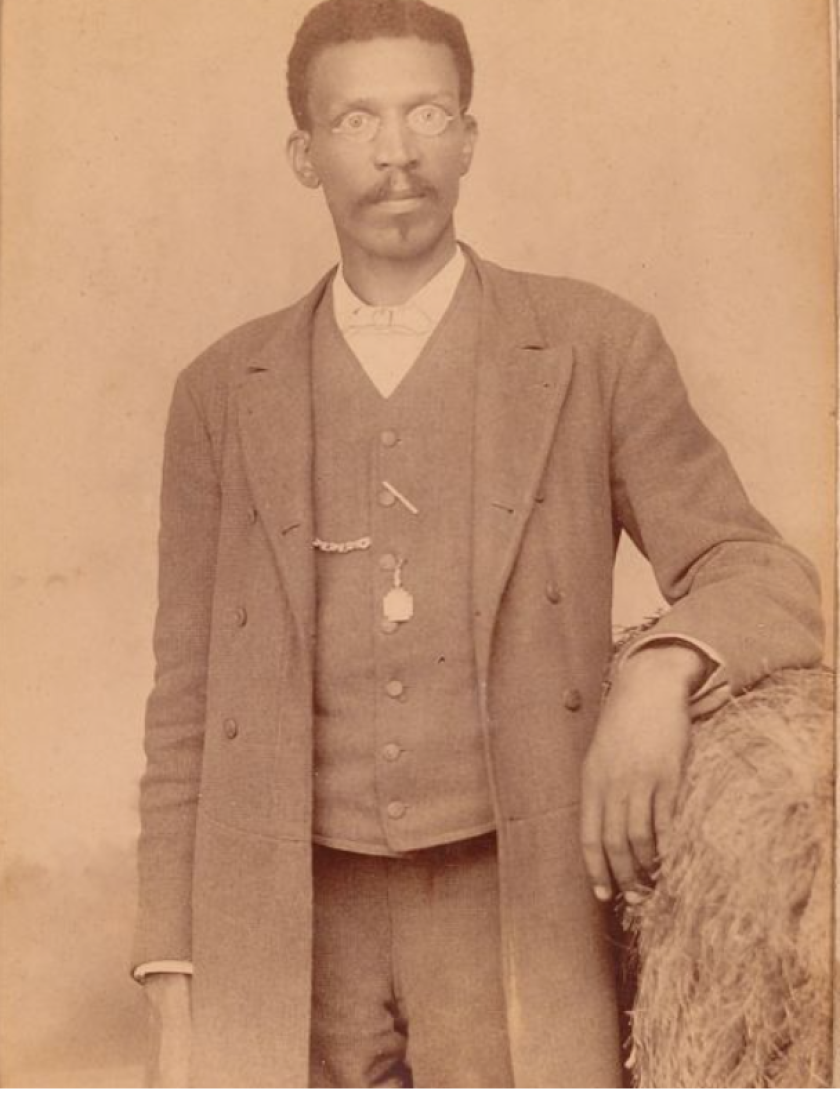How a Black woman became a prominent figure in turn-of-the-century Fargo – InForum

FARGO — During Black History Month, some may assume Fargo wouldn’t have much to celebrate when it comes to famous Black residents in its history. Yet as the city continues to become
it’s important to recognize that the Fargo-Moorhead area has always been home to Black residents.
One such resident whose story continues to fascinate more than 100 years later is
that catered to the well-to-do in the community at the time.
Massey arrived in 1871, just a few years before Fargo incorporated as a city, and set to work. She built a house at 118 Third St., had a handful of boarders and soon purchased more land at
201 Third St. N. where she built her Crystal Palace
(where Fargo City Hall is now). She made many connections and often dined at the Headquarters Hotel “in grand style (with) the leading men and women of the day,” according to a June 1975 Forum article.
Even though the Crystal Palace was in the
of town known as The Hollow, Massey sent engraved invitations to Fargo’s leading businessmen announcing its grand opening.
(The Hollow was concentrated in the blocks surrounding the intersection of Second Avenue North and Third Street North, an area of town that was dangerously close to a frequently flooding Red River but also close to the nearby business district.
NDSU alum and author Anna Marie Munns pointed out in her graduate thesis
about Fargo’s red-light district that “the placement of
speaks to the importance of this area to the city. Proximity to the nearby business district is clearly a priority for the city today, as it was for the madams 100 years earlier.”)
Although prostitution and brothels were illegal in Fargo since 1896, the Crystal Palace generated ample income for the city, so Massey regularly paid her fines to keep police officers at bay. Eventually, Massey was convicted on charges of selling alcohol, according to a June 26, 1900, Bismarck Tribune article, and was sentenced to a year in the state penitentiary.
According to the article, this was Massey’s second conviction, which accounted for the severity of her sentence. She’d been ordered in 1898 to close her house and was sentenced to 90 days in the county jail along with a $200 fine.
For the second conviction, her attorneys appealed the decision to the Supreme Court but lost because Massey headed to Bismarck to serve her time. She was the only female prisoner there. At age 63, Massey knew good behavior would improve her situation, and she was released in April 1902 after serving less than a year. She was arrested again, but
those charges were dropped because “the prosecuting witness forgot his lines.”
She returned to Fargo and continued running her business, finding herself embroiled in a few more legal cases. In 1908, she was sued for “running a house of ill-fame” but denied the charges and stated she ran a boarding house, according to a Nov. 28 Fargo Forum and Daily Republican article.

In 1911, Massey’s health was failing and she died in May at a Fargo hospital; her Forum obituary recognized her as a “well known character” in the community. An extensive probate record unearthed by
Dr. Angela Smith and her history students
at North Dakota State University indicates how successful her business had been through the items she left behind: diamond earrings, china dishes, a gilded parlor set, fur coat and more. At the time of her death, Massey owned both the large, two-story Crystal Palace and another smaller building in The Hollow, which were left to her son Henry Massey, along with money.
What makes
so interesting is the fact that she was both Black and a woman, neither of which spelled success in the late 1800s and early 1900s. “She isn’t a victim; she had lawyers and money and went to court unafraid,” Smith explained in the
“This woman came to this place and carved out a space for herself. Don’t we want her to be known for that regardless of what she did as a profession?”
As a woman and a person of color, Massey wasn’t frequently written about in the newspapers of her day, and if she was, it was in reference to her legal issues.
Court cases directed Smith and her students so they could research her life.
Her story even drew
to
Fargo to visit the unlikely location where their ancestor found success
at a time when most people would not have expected a Black woman to do so. She faced challenges, (an early brothel burned in 1892 and a patron died during the incident, her many court challenges, navigating what appears to be a turbulent marriage) but she saw an opportunity for herself and did what she could to build a life for herself, her son and the women she employed.
‘Still learning these stories’
As Massey’s story becomes more well-known in Fargo’s history, the Historical and Cultural Society of Clay County and its archivists hope to continue sharing more stories about Black residents from Fargo-Moorhead. In 2022, the
such as barber Frank Gordon, who ran for city alderman before heading west to homestead near Grenora, North Dakota. His grandson became the famous saxophonist Dexter Gordon.
was a former slave who fought in the Civil War and moved to Moorhead in 1873 and became a barber; in November 2023,
was unveiled on the Minnesota State University Moorhead campus.

Submitted Photo
Julius Taylor was another barber who ran Taylor’s Tonsorial Palace with his wife, Anna.
He also wrote for the Fargo Argus and eventually moved to Chicago to start an African American newspaper there while his wife became a notable artist.
Cordelia Blount was born in Moorhead
and went to school at a time when most of the other Black families were leaving, likely for more predominantly Black communities, Historical and Cultural Society of Clay County program director Markus Krueger said. Blount’s parents stayed until after Cordelia graduated in 1927, moving to Georgia to be closer to their daughter as she began a successful career as a college educator and administrator at universities in South Carolina and Georgia.

Contributed / WikiTree
The exhibit shared the story of
Black bonanza farmer William Thornton Montgomery,
who escaped slavery and fought in the Civil War against the Confederacy. He eventually came to Richland County where he would own more than 1,000 acres of Red River Valley land.
Fenwick Watkins was a successful real estate businessman who also coached football at Fargo College, North Dakota Agricultural College (now NDSU) and Concordia in the 1910s and 1920s; he was the first Black head coach in North Dakota. Born in Vermont, Watkins was a standout athlete, earning the distinction of captain on a predominantly white football team, who moved to Fargo and was identified as white on all but one census record.
Even though
is no longer available at the Hjemkomst Center, work continues on collecting important stories of Black Fargo-Moorhead residents. Communications Manager Gabby Clavo said an exhibit like that takes a lot of time to create and that listening to the community was crucial in collecting more stories for the future. “We’re still learning these stories and building off of this exhibit, so we don’t want it to be a one-and-done,” Clavo said.
Danielle Teigen has a bachelor’s degree in journalism and management communication as well as a master’s degree in mass communication from North Dakota State University. She has worked for Forum Communications since May 2015, first as a digital content manager before becoming the Life section editor and then deputy editor. In 2020, Danielle moved back to her hometown in South Dakota, where she works remotely for Forum Communications as managing editor of On the Minds of Moms as well as writes occasional news and history stories.

























































